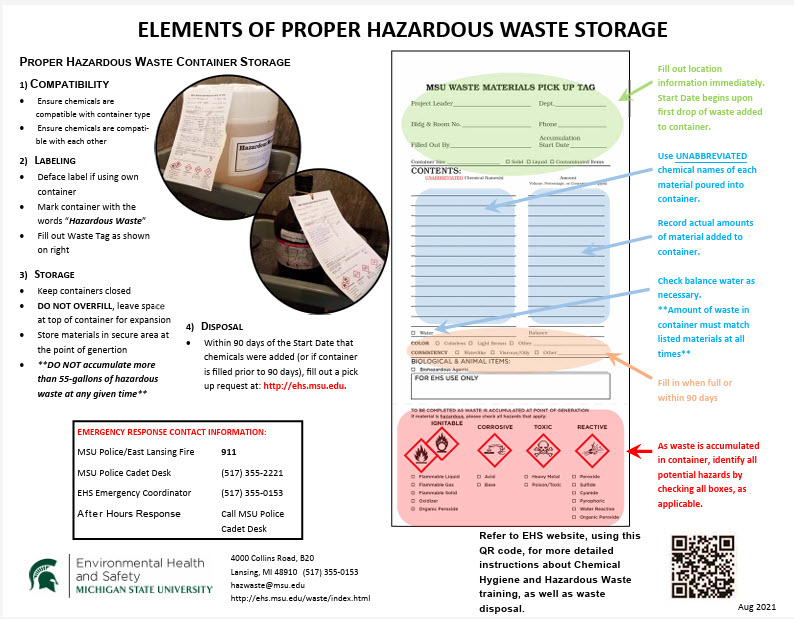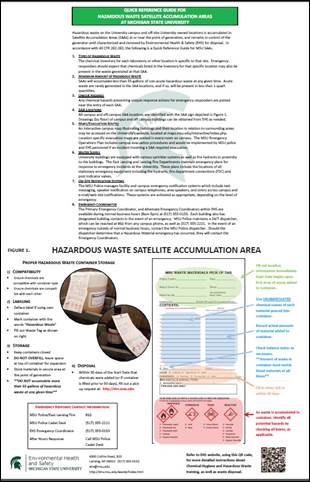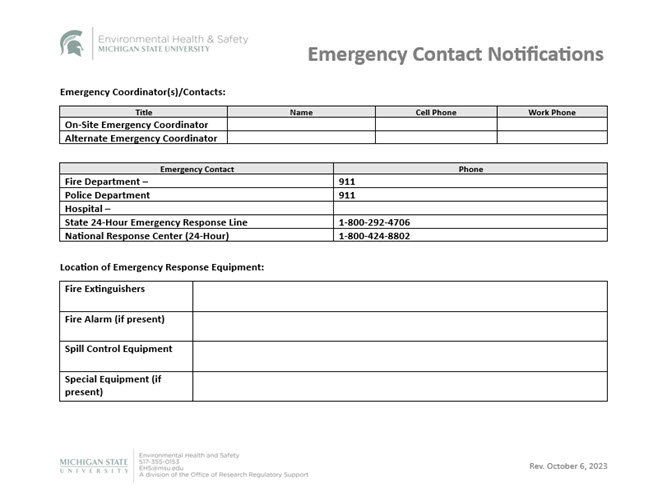Managing Regulated Waste
1) Required Postings
Chemical waste at MSU is managed under the EPA’s Satellite Accumulation Area (SAA) regulations. One of the requirements for a SAA is to have a Quick Reference Guide for Hazardous Waste to aid with emergency preparedness and waste storage requirements. EHS has posted these in each known location generating waste. If yours is missing or damaged, please contact the EHS Hazardous Waste staff at hazwaste@msu.edu to request a replacement. It must be displayed on the inside of the entry door to the space, or as close to the entry door as possible.
The bottom portion of the guide depicting container storage requirements can be printed from the Waste Section of the EHS website and placed near hazardous waste storage locations as needed.

Elements of Proper Hazardous Waste Storage (PDF)
Additional postings for emergency preparedness are required to be inside the entry doors for the following off-site MSU locations: Grand Rapids Research Center, Kellogg Biological Station, and Midland-St. Andrews. EHS has posted these in each known location generating waste at those sites. If yours is missing or damaged, please contact EHS Hazardous Waste staff at hazwaste@msu.edu to request a replacement.
2) Hazardous Waste Storage
a) Don’t Move Waste
b) Accumulation Limits
The EPA’s Satellite Accumulation Area rules set limits on the total amount of hazardous waste that can be accumulated in one space at any given time. Submitting frequent hazardous waste requests will ensure that the following limits are not exceeded:
- No more than 55-gallons of non-acute hazardous waste. This 55-gallon limit applies to the sum of full containers and partial containers being filled in the SAA.
- No more than 1 quart of liquid or 1 kilogram of solid acute hazardous waste (i.e. P-listed hazardous waste)
Waste containers must be kept free of any liquids or residue on their exteriors. EHS Hazardous Waste Staff will reject any container with liquid or residue on the exterior until it has been cleaned. Leaking waste containers will not be accepted, and the contents must be transferred to a new container prior to disposal by the EHS Hazardous Waste group.
- All container lids MUST be closed tightly unless waste is being actively added to the container.
- Do not overfill containers.
- Secondary containment is not required but is recommended for waste storage.
Submit frequent requests for waste pick up through the EHS Hazardous Waste Request form to stay within the 90-Day storage limit and minimize the amount of waste containers in your space.



